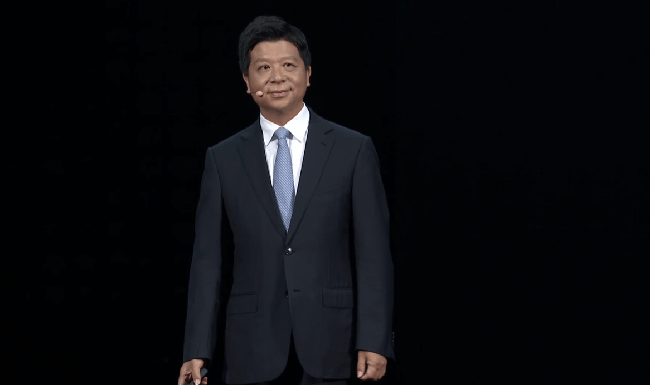
Huawei rotating chairman Guo Ping (pictured) argued the vendor holds sufficient stock of smartphone and network equipment to overcome supply chain obstacles raised by US sanctions, adding it is evaluating its options for future supplies.
In his keynote, Guo said continuous US attacks on the company had raised “great challenges to our production and operations”, and “survival is the goal” in the near term.
“We got the last batch of chipsets in the middle of September. We are still assessing the specific impact.”
With Huawei consuming hundreds of millions of chipsets each year, he said it is looking for ways to address future supply, noting it understands some vendors are applying for licences with the US government to continue supplying the company.
Guo cited reports from Japanese media estimating a ban on Huawei equipment there could cost domestic companies as much as JPY1 trillion ($9.5 billion). “We hope the US government will give its laws and regulations a second thought. I believe openness and cooperation is the best way for the world to further grow.”
Cutbacks
Despite “non-stop aggression” from the US, he expects the company’s business fundamentals to remain stable for some time and isn’t planning company-wide staff cuts, although it is making adjustments in specific markets like Australia.
“We will continue to ensure stable operations, as we still want to attract the best talent.”
David Wang, president of products and solutions, said the US push for so-called “clean 5G” had not adversely impacted its business and emphasised it’s important to define what the term means.
“It needs to be based on rational standards and not just defined by some governments or politicians. I believe that countries and operators will make their own rational choices based upon facts and rules.”
The company stopped reporting its 5G network wins a year ago, noting it is not always clear what counts as a real deployment.
ICT impact
Guo said new technologies have powered the digital transformation of all industries, with research showing a $1 invested in digital technology leads to $3 in digital transformation returns.
The digital economy accounted for around a third of total GDP in China in 2019 and contributed to two-thirds of total economic growth.
He said the company completed large-scale 5G rollouts against the backdrop of uncertainty in 2020, with connectivity, cloud, AI and computing driving massive opportunities for the ICT sector.
Highlighting the new use cases being created by the convergence of the technologies, Shenzhen Metro GM Tang Shaojie explained automating train line inspections using 5G video, AI and intelligent analysis reduced labour costs by 60 per cent and greatly increased accuracy.
The automated system uses 360-degree dynamic image tracking and big data analytics to locate problems.










